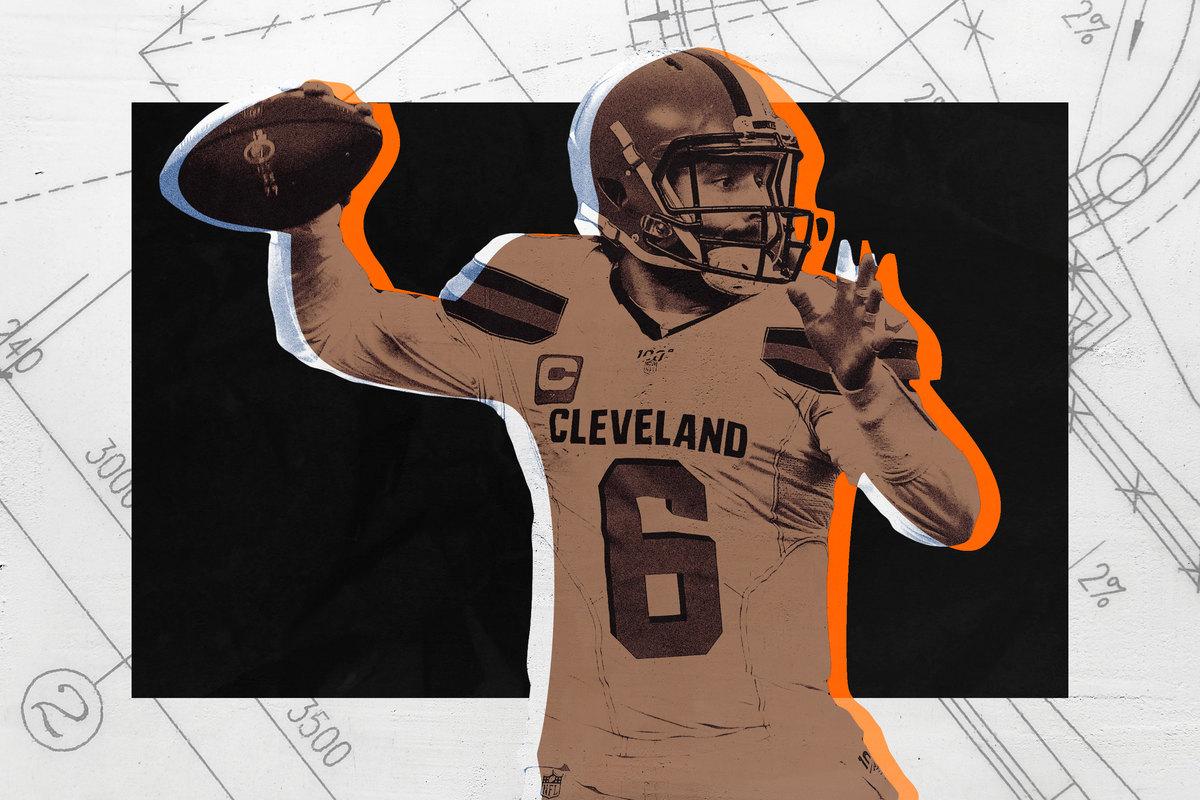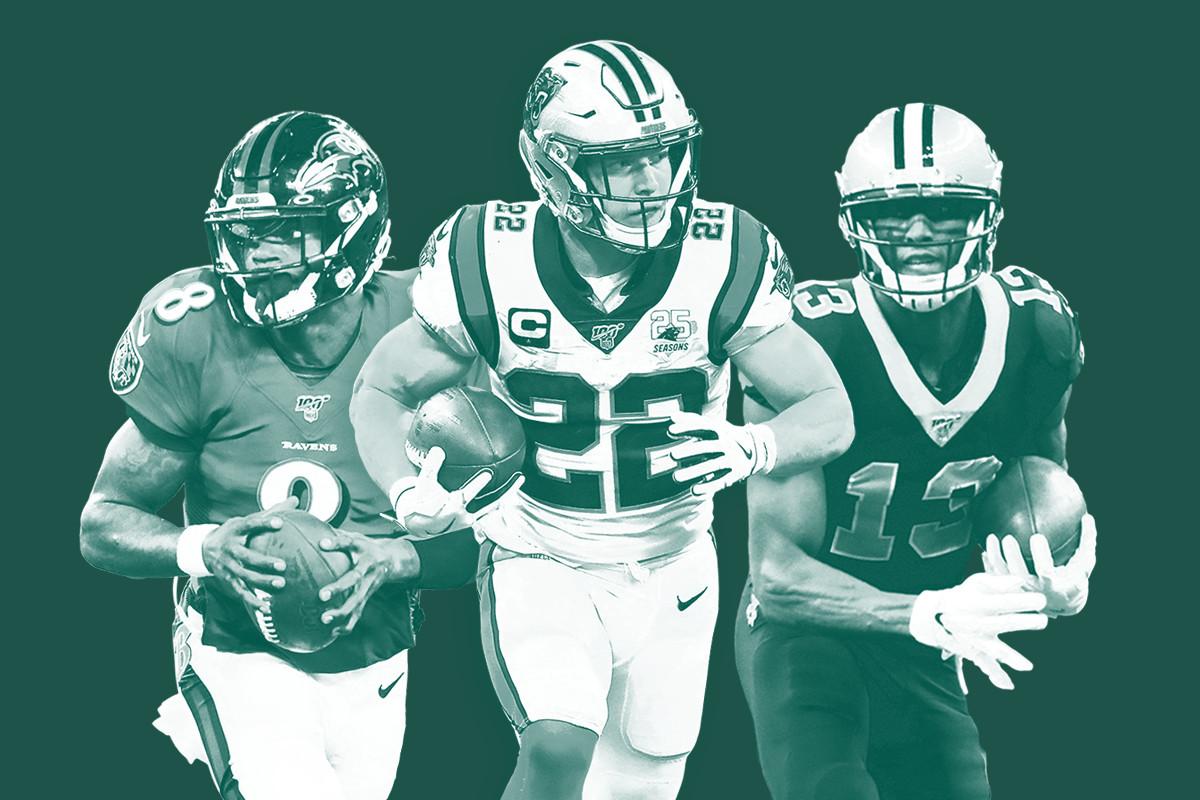
Remember when we all thought the Browns were the NFL’s next dominant team? Or that Carson Wentz was a no-brainer future MVP? Or that Sean McVay was the league’s next great mastermind? Some of the NFL’s teams, players, and coaches who were in the spotlight the past few seasons enter 2020 with tempered expectations—but that doesn’t mean we should count them out. Welcome to The Ringer’s Post-Hype Week, when we revisit some of the league’s biggest story lines from seasons past that aren’t getting as much love ahead of this campaign.
Baker Mayfield’s engine has always run on grievance. He categorizes and catalogs every bad thing said about him, and uses the slights as fuel. In high school, he didn’t get an offer from a high-level college program, so he walked on at Texas Tech and won the team’s starting job. At Texas Tech, he said he struggled to land a scholarship, so he transferred to Oklahoma and won the starting job there too. At Oklahoma, he didn’t like the way Ohio State celebrated a 2016 victory over the Sooners, so he went to Columbus the next year and planted a flag in Ohio Stadium after beating the Buckeyes. He even got mad at Kansas one time. Kansas.
Mayfield has kept track of every criticism of him—that he’s too short, that he’s too brash, that his arm isn’t strong enough—and laughed at them en route to hoisting the Heisman Trophy and becoming one of the greatest statistical quarterbacks in college football history. Despite some people writing off his success as the product of head coach Lincoln Riley’s system, Mayfield rocketed up draft boards and became the no. 1 pick in the 2018 class. Even as he surpassed any and all expectations, there were always more people willing to say that Mayfield was flawed. His doubter fuel seemed to be a renewable energy source.
But last year, people widely stopped doubting him. After Mayfield turned around a dismal 2018 Browns season and set the NFL rookie record for touchdown passes, he silenced most of his critics. Then, in March 2019, Cleveland traded for star wide receiver Odell Beckham Jr. Suddenly Mayfield’s success was no longer doubted, but expected. The Browns entered last fall as a trendy playoff pick; I predicted that Mayfield would be named league MVP. After all, quarterbacks often take leaps forward in their second seasons; the past two MVPs have been second-year quarterbacks, and it could’ve been three if not for a 2017 injury to Carson Wentz. What would Mayfield’s leap look like after such a spectacular rookie effort?
Instead of a leap forward, though, Mayfield took a step back. The Browns went 6-10, avoiding a last-place AFC North finish only because the Bengals went 2-14. (One of Cincinnati’s two wins was against Mayfield’s Browns; Baker threw three picks in that game.) Mayfield ranked 31st among 32 qualifying quarterbacks in passer rating, 36th of 39 quarterbacks in Pro Football Focus’s adjusted completion percentage, and tied for 27th in adjusted net yards per attempt. Beckham had the worst season of his career, posting a career low in yards per game and the third-lowest catch percentage of any wide receiver with at least 50 receptions. Cleveland’s offense regressed from averaging 22.4 points per game to 20.9. Freddie Kitchens, the coach the Browns hired before the 2019 season after Mayfield went to bat for him, was fired after just one season.
Mayfield’s play from 2019 showed signs of a quarterback lost in his own head. He looked skittish in the pocket for the first time in his career, and forced passes to Beckham and Jarvis Landry amid fears that they weren’t getting enough targets. “I lost myself,” Mayfield says of the 2019 season. He also admits that he wasn’t in his best playing shape after putting on a few pounds. (The Browns agree.)
The most jarring thing about Mayfield’s performance was the sheer number of interceptions. He threw 21 picks in 2019, which would’ve led the league in almost any other season but ranked second last fall thanks to Jameis Winston’s virtuosic interception-throwing campaign. Mayfield threw 21 combined picks over his three seasons at Oklahoma—and matched that total last season for the Browns alone. He never threw three interceptions in any of his 40 games at Oklahoma; he did so in three games last year.
At Oklahoma, Mayfield was the epitome of efficiency. As a senior, he posted what was then the highest passer efficiency rating in college football history. The record he broke was his own rating from his junior year. He also set what was then the yards-per-attempt (11.5) record, and his junior mark (11.1) ranked third all time behind Michael Vick’s 1999 season. Normally, we don’t associate prideful quarterbacks with efficiency; when we hear of a QB with swagger, we picture a player willing to throw into double coverage, confident that he can thread the needle. But Mayfield’s confidence didn’t manifest itself in unnecessary throws. On every play, he knew that sooner or later one of his receivers would pop open, and that when he did he’d be deadeye accurate in hitting him.
Now Mayfield is routinely doing the least efficient thing possible—throwing the ball to the other team. So what’s going on with all these picks? Let’s watch all of his 2019 interceptions to find out:
Two things stand out from this compilation. The first is that many of these came on forced throws to covered receivers, particularly to Landry and Beckham. They finished 10th and 15th in targets last season, respectively, while no other Browns player finished among the top 125. This approach didn’t work. When targeting Beckham and Landry, Mayfield tallied 10 touchdowns and 15 interceptions. He said last November he needed to “force feed” Beckham; meanwhile, Beckham complained about his lack of involvement in the Cleveland offense.
The other thing that stands out is how many of Mayfield’s balls bounce off of his receivers’ hands. By my count, eight of his picks happened this way, including some pretty hilarious ones.
I mean, come on.
I mean, COME ON.
Mayfield got unlucky on these throws, but we can’t act as if his passes were perfect. The throw to Dontrell Hilliard was behind him; the throw to Antonio Callaway—which may be the funniest drop I’ve ever seen—was low. While the Browns receivers clearly need to do a better job catching the ball, Mayfield was out of sync with many of his targets, including Beckham and Landry. Beckham should have caught the pass in the below clip—but why couldn’t Mayfield, who was hyper-accurate at Oklahoma, cleanly hit an open Beckham on a quick slant route?
These were never problems for Mayfield in college. At Oklahoma, Mayfield had feature receivers—CeeDee Lamb and Hollywood Brown went on to become first-round draft picks, while Dede Westbrook has proved to be a quality NFL player—but never forced passes to them. He always believed that his guys would get open, and that he was good enough to get them the ball when they did.
Perhaps the strangest thing about Mayfield’s 2019 struggles is that they came primarily from a clean pocket. Pro Football Focus graded Mayfield as the 26th-best quarterback from a clean pocket last season. Mayfield had 15 interceptions from a clean pocket—only three QBs in the PFF database have ever thrown more in a single season. (One was Jameis Winston last year, one was Brett Favre in 2006, and—I absolutely love this stat—Eli Manning did it three times, in 2007, 2010, and 2013.)
I believe that Mayfield is still the hyper-accurate quarterback he was in college. His problems—uneasiness in clean pockets, a self-imposed mandate to get the ball to his top targets, inconsistent connections with said targets—are incompatible with who he was as a younger player.
Perhaps Mayfield simply could not operate without the haters. A career built on disproving doubters fell apart when hype replaced skepticism. The good news is that the haters are back. The Browns have reclaimed their place in football fans’ imagination as a hopeless whirlpool of bad coaches and bust quarterbacks. Mayfield’s doubt-fueled engine should once again have a full tank.
He’d better hope that’s the case, anyway. Because the other option is that the people who found flaws in Mayfield’s game were actually right.
